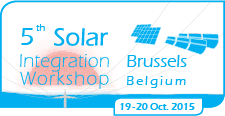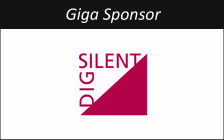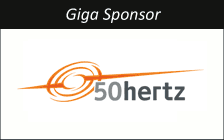HVDC Tutorial
Technology and Modelling Overview of HVDC
Chair: Carsten Heising (Avasition, Germany)
The tutorial will be held on Monday afternoon, 19 October 2015 and is designed for all interested in the modelling of HVDC. For information on fees and registration, please see below.
Preliminary Program
| 11:30 - 12:00 | Registration |
| 12:00 - 13:00 | Lunch |
| 13:00 - 13:45 | HVDC converters, cables and platforms for offshore wind applications and the use of modelling techniquesPresenter: Magnus Callavik, Technology Manager Grid Systems, ABB, Sweden The presentation will cover experience from offshore wind installation and present status of ongoing HVDC-based installations. Present trends and future outlook of in voltage source converter HVDC, extruded cable technologies and offshore platform will be covered. The use of various modelling methods will be exemplified. |
| 13:45 - 14:30 | An approach for the study of HVDC connections for offshore wind power plantsPresenter: Bernd Weise, DIgSILENT, Germany Analysis of operation during normal conditions
Analysis of operation during fault conditions
Analysis of switching actions
|
| 14:30 - 14:45 | Discussion |
| 14:45 - 15:15 | Break |
| 15:15 - 15:50 | Modelling of VSC_MMC converters for offshore wind interconnectionPresenter: Kumara Mudunkotuwage, Manitoba HVDC Research Centre, Canada Recent experience on design and network integration studies have highlighted the key modelling details that must be present in emt level MMC-VSC models and power electronic based wind turbine models. Emt level studies are used to determine the converter control strategy to meet grid codes. As well emt level studies are performed to define the converter protection parameters to limit temporary current and voltage transients within power electronic device ratings. Once the fundamental design is determined RMS type models are used to perform system level stability studies. The challenges of implementing RMS model of MMC converters, modelling assumptions and the studies that can be performed using such models will be highlighted using tutorial presentations and example simulations. |
| 15:50 - 16:25 | Modelling and calculation methods for system analysis in offshore and onshore HVDC applicationsPresenter: Carsten Heising, Avasition, Germany In general but especially in larger projects dealing with power-electronic assets like e.g. HVDC-transmission systems, there are two main goals which should be achieved. On the one hand, the asset should be commissioned and go into operation as planned without any delays. On the other hand, the asset should be designed optimal concerning topology and dimensioning because of the high investments. These goals are hard to achieve due to the high complexity of, amongst others, the switching elements, the control software, the connected grid systems, numerous relevant scenarios and stability issues of actively controlled converters. Due to the fact that all aspects are strongly dependent, detailed studies of different types and assessments based on high-quality models including a high number of scenarios are indispensable. On a first glance, a conflict of the necessary high quality, the high number of cases and the required short study-realization time exist in order to minimize the technical and commercial project risks. Without alternative, the only way to solve this conflict without notably increasing the project risks is to realize a high grad of automation concerning design, assessment and quality processes. Within this presentation, exemplarily relevant studies, critical technical aspects and a possible automation approach is presented. |
| 16:25 - 16:40 | Discussion |
| 16:40 - 17:00 | Break |
| 17:00 - 17:35 | Analysis and Mitigation of Resonance and Voltage Instability in Offshore Wind Power Plants with HVDC TransmissionPresenter: Jian Sun, Professor and Director, Center for Future Energy Systems, Rensselaer Polytechnic Institute Resonance has been reported in offshore wind power plants employing HVDC transmission. Such resonance can damage filter components and/or cause instability of the ac bus voltage, leading to shutdown of the entire wind power plant. In addition to filter components and cable impedance, control of wind turbine inverters and HVDC converters plays a crucial role in such resonance and often also offers the most effective solutions. Methods to model the positive and negative-sequence impedance of wind turbine inverters and HVDC converters from subsynchronous to supersynchronous frequencies will be introduced. An impedance-based system stability theory is then presented for the analysis and mitigation of both voltage instability and resonance problems. Case studies are also presented to illustrate the problems and possible solutions. |
Tutorial Fee
| Deadline for Registration |
Final Price excl. VAT |
Final Price incl. 21% VAT |
|
|---|---|---|---|
| Early Bird | - | - | - |
| Mid-Registration | until 21. Sept. 2015 | 435.00 € | 526.35 € |
| Late-Registration | 22 Sept. until 11 Oct. 2015 |
460.00 € | 556.60 € |
| On-Site-Registration | 490.00 € | 592.90 € | |
| Student | until 11. Oct. 2015 | 335.00 € | 405.35 € |
Registration
The HVDC tutorial is not included in the general registration fee.
If you would like to participate, please register here:

Please note: There is a minimum number of 5 tutorial participants required, otherwise the organizer is entitled to cancel the tutorial. In case the tutorial is cancelled, the participation fee would be refunded. Further claims of the participant are, as far as legally permissible, expressly excluded.




















